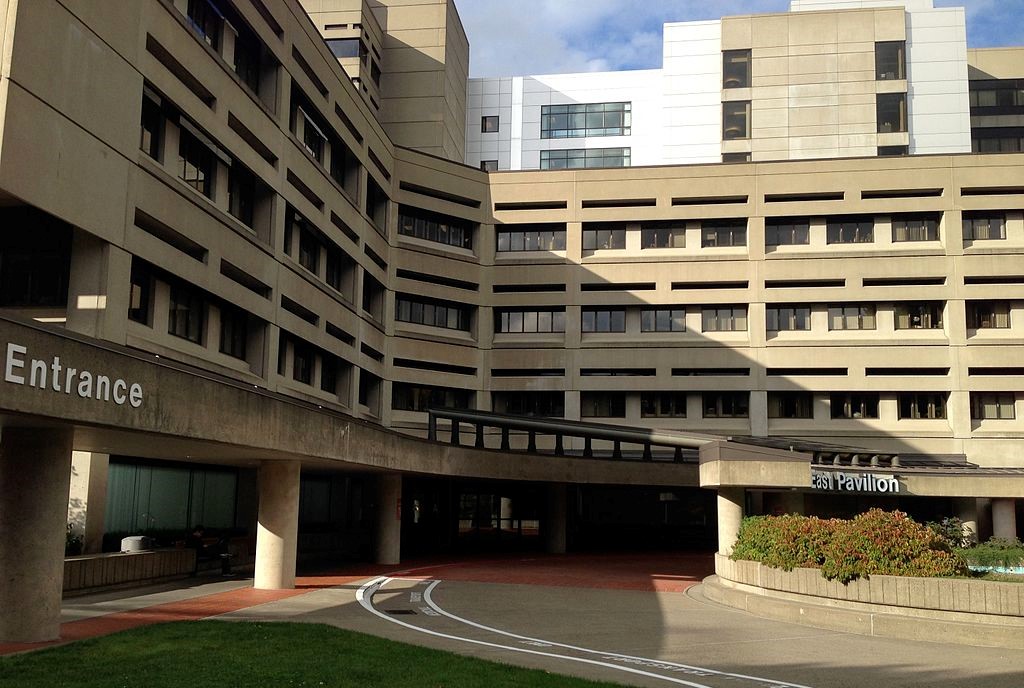Oregon’s 5th District is a “top ten” race for control of Congress
Published 2:35 pm Friday, October 21, 2022

- Oregon's 5th Congressional District
When the Democratic-dominated Oregon Legislature voted on political redistricting last September, Republicans were apoplectic about maps they said were designed to lock-in Democratic advantages in the Legislature and Congress.
Even a few Democrats blanched at the outcome.
“It was supposed to be bipartisan or nothing,” said Rep. Brian Clem, D-Salem, who announced he would not run for re-election. “The change in the process is more than I can stomach… This is not okay and I just can’t dignify it with my vote.”
Drawing the most fire were congressional maps that required adding a sixth district the state received because of its rapid population growth over the prior decade.
The final maps were slammed by GOP lawmakers as drawn to ensure a 5-to-1 Democratic advantage in the congressional delegation.
It included a radically redrawn 5th Congressional District, snaking from southern Portland, over the Cascades to scoop-up the growing Democratic voter numbers in northern Deschutes County east of the mountain range.
Republicans saw two Democratic voter pools that could only be joined by the bottleneck at the Santiam Pass, 4,817 feet in the Cascades. The route gets snow from early fall to late spring.
“You have the largest geographical barrier in our state dividing a district that is united only because of political desire,” said Cheri Helt, a former GOP lawmaker who is running to be commissioner of the state Bureau of Labor and Industries.
Helt suggested the new member of Congress would need a satellite phone and avalanche beacon to navigate the two ends of the district from autumn to spring.
A year later, Republican complaints have been replaced by bullish opinions that they can win some of the districts – with the most optimism aimed at flipping he 5th. It’s the district with the smallest Democratic voting history tilt, and features candidates from opposite ends of the map and political spectrum.
With Democrats holding a narrow 221-212 majority, with two vacancies, even a handful of seats flipping to Republicans could give the GOP control of the House when it convenes in 2023.
The election forecasting website FiveThirtyEight put’s Oregon’s 5th District on that shortest of short lists.
Closed primaries in which only party members could vote helped progressive Democrats rally around Terrebonne attorney Jamie McLeod-Skinner in her upset win over moderate U.S. Rep. Kurt Schrader, D-Canby.
McLeod-Skinner has been cross-nominated by the Independent Party and Working Families Party.
Republicans chose former Happy Valley Mayor Lori Chavez-DeRemer, who has received political and financial backing from GOP leaders aligned with former President Donald Trump. Some of the earliest support came from Rep. Elise Stefanik, R-NY, chair of the House Republican Conference after the dismissal of Rep. Liz Cheney, R-WY, who voted to impeach Trump.
A win by either candidate in the 5th District would be historic.
McLeod-Skinner would be the first open lesbian from Oregon in Congress.
Chavez-DeRemer would be the first Latina elected to Congress from the state, though Rep. Andrea Salinas, D-Lake Oswego, is the Democratic candidate in the new – and wide open – 6th District seat, centered around Salem.
In a constitutional quirk also in play for the 6th district, Chavez-DeRemer and McLeod-Skinner each live just outside the boundaries of the 5th District. The U.S. Constitution requires U.S. House members live in the states they represent, but residency is not required in the districts.
With less than three weeks before the Nov 8 election, the outcome in the 5th district has been rated too close to call. FiveThirtyEight, a election forecasting group affiliated with ABC news, listed the 5th District as one of 10 out 435 House districts that would decide which party controls the chamber next year.
In its most recent weekly analysis of race, FiveThirtyEight gives Chavez-DeRemer a 54% chance of winning vs. 46% for McLeod-Skinner.
Voter Registration
Non-Affiliated: 172,594
Democrats: 170,279
Republicans: 145,513
Independent Party: 27,237
Other parties: 10,093
Total: 525,716
source: Oregon Secretary of State, October 2022
Money:
Congressional candidates had to file updated campaign contribution and spending totals on Sept. 30 with the Federal Elections Commission.
McLeod-Skinner has raised $2.7 million, spent $2 million, and has just over $663,000 in cash.
Chavez-DeRemer has raised $1.9 million, spent $1.5 million, and has just over $376,000 in cash.
The totals do not reflect spending since Sept. 30 or independent PAC spending for or against candidates.
Notable: On Oct. 21, the Congressional Leadership Fund, a PAC with ties to national Republican leaders, reported it was spending $846,362 for digital, mail, and television advertising on the 5th District race in Oregon. The report said over $822,000 would go to negative advertising against McLeod-Skinner and $24,000 in positive advertising of Chavez-DeRemer.
The candidates in their own words
Lori Chavez-DeRemer statement on her campaign website:
“The left doesn’t want to talk about cracking down on illegal drugs, gang violence, antifa, rioting, or looting. They want to ban you from protecting yourself and your family. They want to redefine our Constitution and Bill of Rights. Washington, D.C. radicals believe in multiculturalism, moral relativism, and that socialism, ‘just hasn’t really been tried yet.’ They want open borders, government-funded healthcare, and abortion on demand. I won’t stand for it.”
Jamie McLeod-Skinner statement on her campaign website:
“We need leaders who vote in the interest of those they represent and won’t obstruct impactful legislation or propose fake alternatives for their corporate PAC donors. I will take on special interests to lower costs, end corruption and finally make Congress work for everyday Oregonians. I often say I don’t believe in spending public money, I believe in investing it. Investing in addressing the needs of working families, addressing the climate crisis, and protecting our democracy is how we invest in our future and in future generations.”





